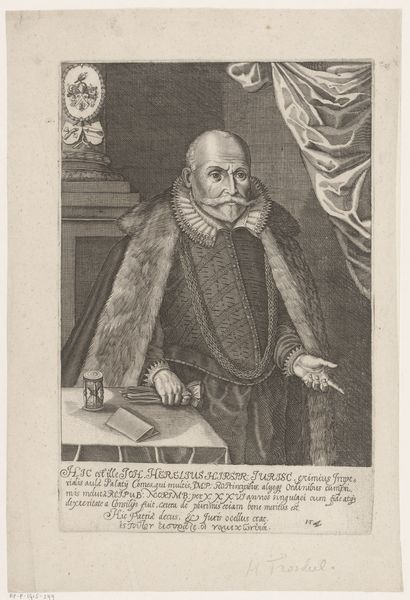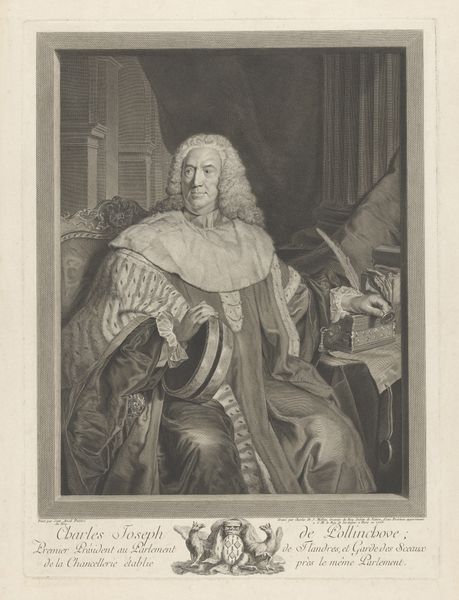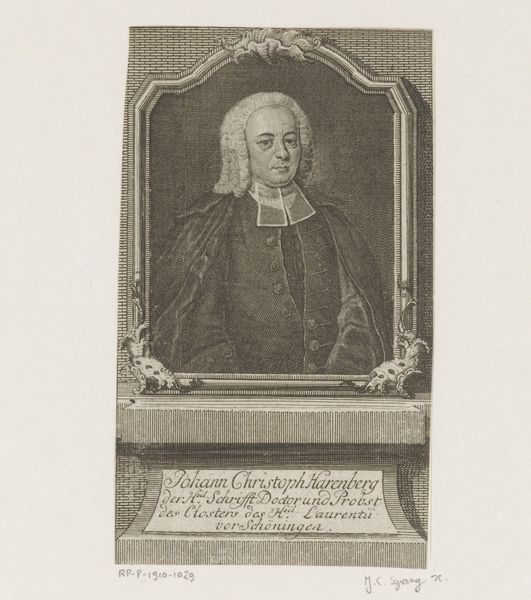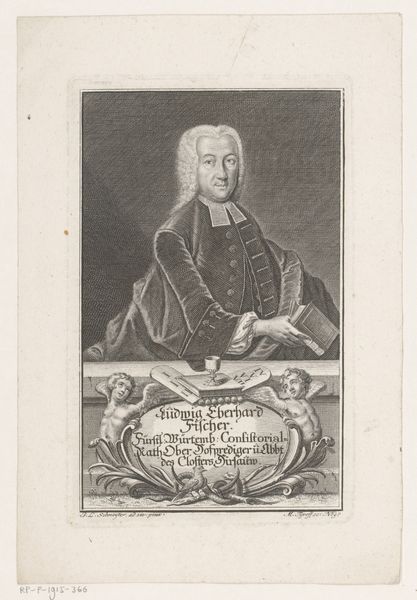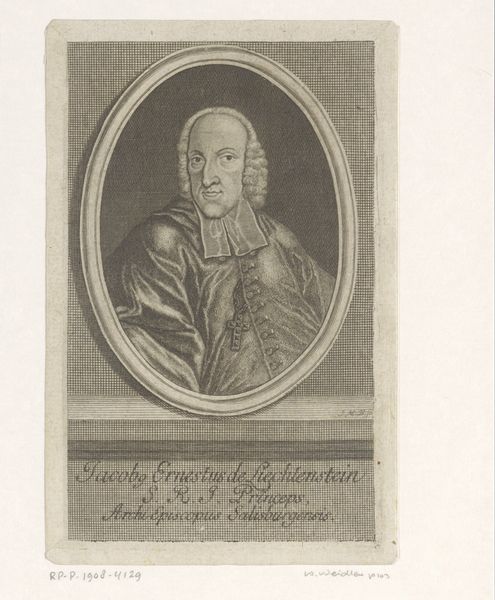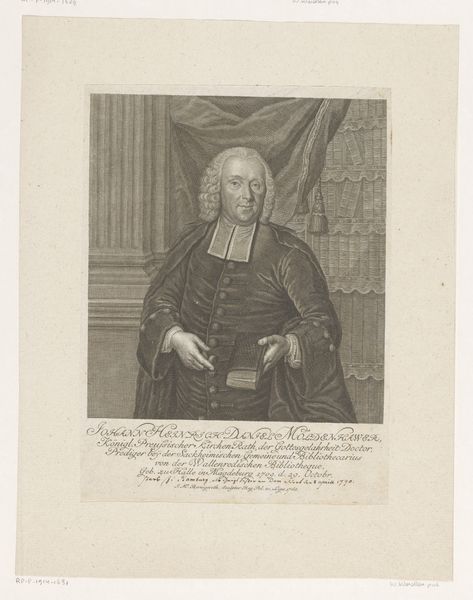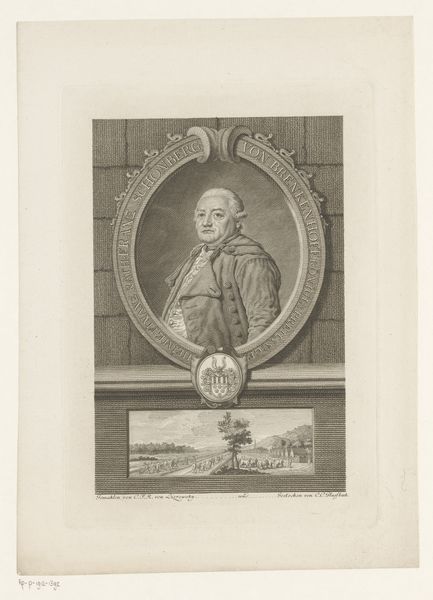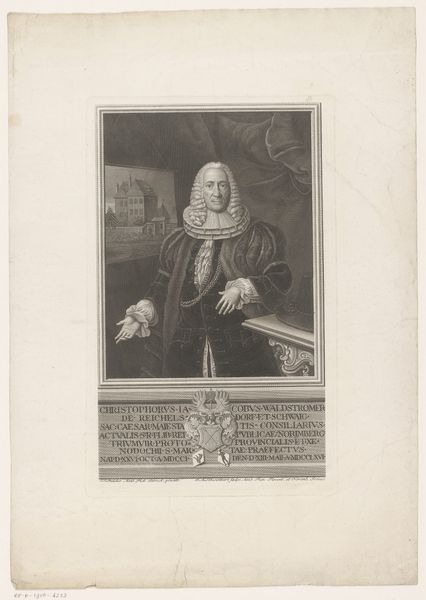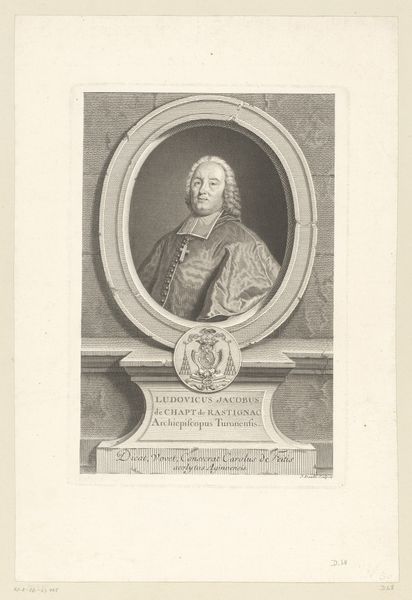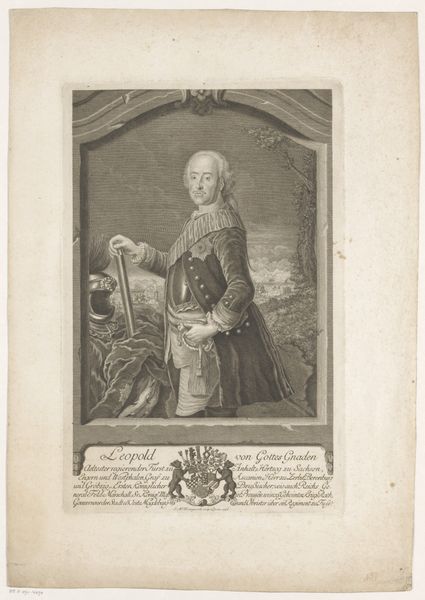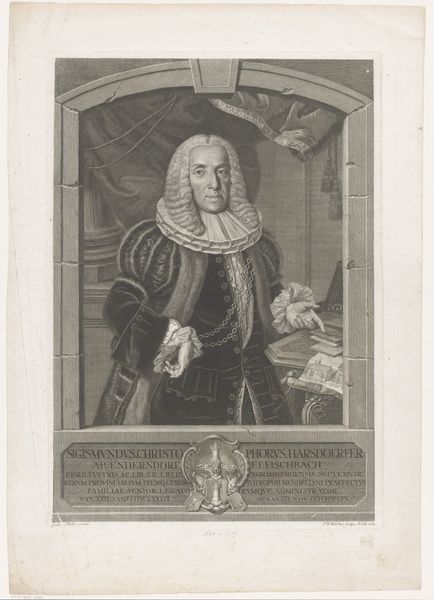
engraving
#
baroque
#
old engraving style
#
history-painting
#
engraving
Dimensions: height 304 mm, width 213 mm, height 38 mm, width 213 mm, height 365 mm, width 236 mm
Copyright: Rijks Museum: Open Domain
Curator: Immediately, I’m struck by the sharp lines, and the density of the etching. It's incredibly detailed. Editor: Let's delve into this "Portret van Joseph Schaitberger." Created in 1732 by Martin Engelbrecht, this engraving resides in the Rijksmuseum, offering a fascinating glimpse into baroque printmaking. It exemplifies old engraving style, doesn't it? Curator: Definitely. Look at the materials used in printmaking: copper plates, the ink itself. The process would require highly skilled labor. What socio-economic status do you think that worker has in 1732 Europe? That can really inform our understanding of not just the final work, but the process itself. Editor: Indeed, and knowing Schaitberger's own context amplifies this. He was expelled from Salzburg for his Protestant beliefs, a narrative echoed in the engraving with that crowd outside what appears to be Salzburg behind him. The “BIBL” on the spine of the book highlights the centrality of faith, and also suggests defiance of Catholic oppression. Curator: Exactly! So we’re looking at material practices but the consumption of printed material – that means Schaitberger's image would be spreading a specific kind of religious ideology against that Catholic dominance. That impacts materials, labor, consumption, *and* politics. Editor: Yes, it situates him within the broader landscape of religious persecution. Considering that engraving enabled the widespread dissemination of images and ideas during this period, the ability to mass-produce and distribute this portrait must have carried a certain power in fostering religious solidarity. Curator: It does change the object! Now its mere creation and consumption *are* a symbol of the tensions of that era. Editor: It makes the work speak to the ongoing dialogues surrounding identity and resistance. Curator: This detailed focus has shown me this isn’t just a pretty portrait; it's a crafted act of defiance printed in ink and pressed on paper. Editor: I'm left considering the engraving’s capacity to preserve and circulate histories, particularly those of marginalized individuals who challenged prevailing power structures.
Comments
No comments
Be the first to comment and join the conversation on the ultimate creative platform.
